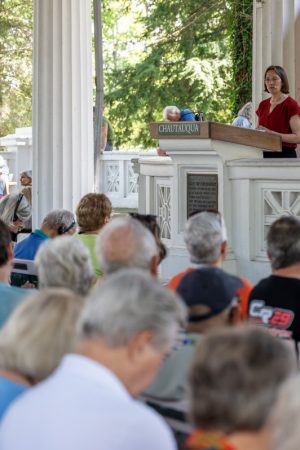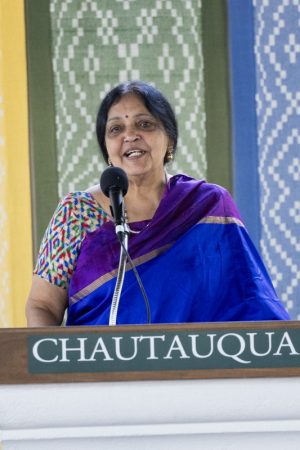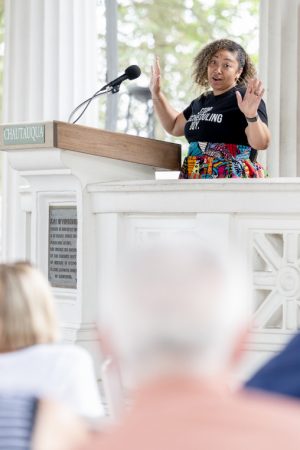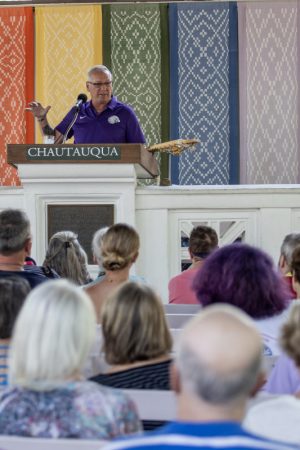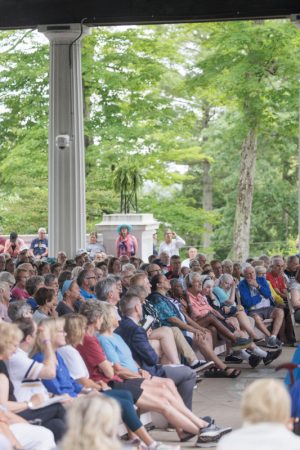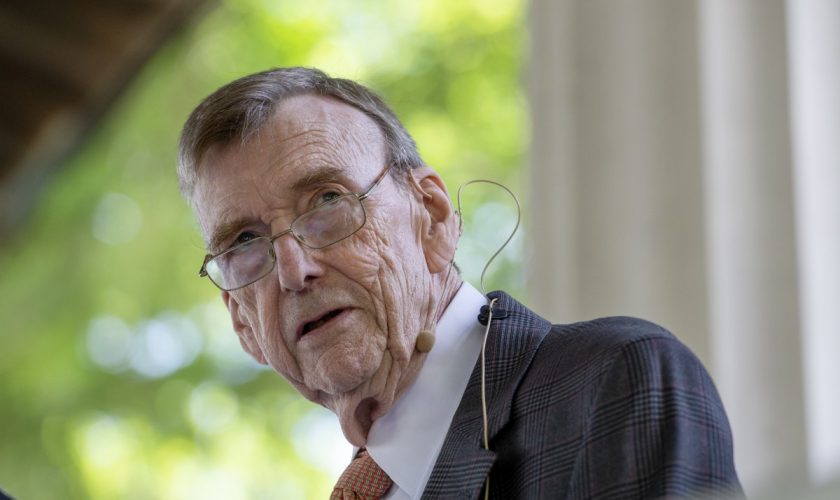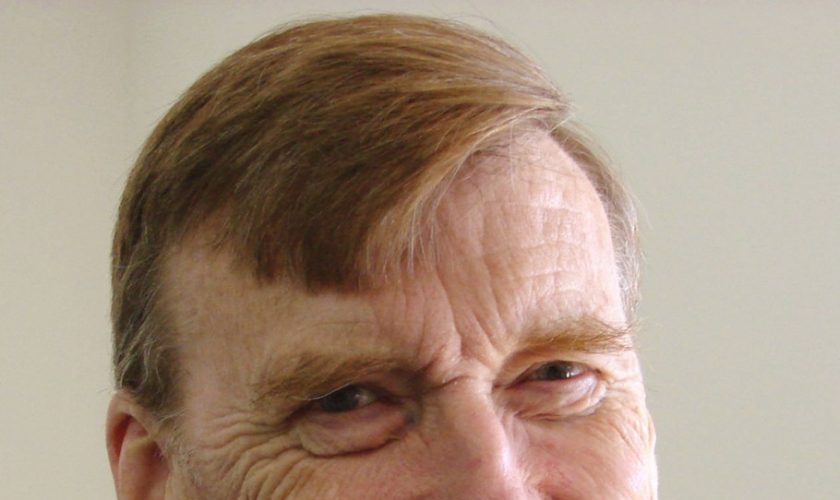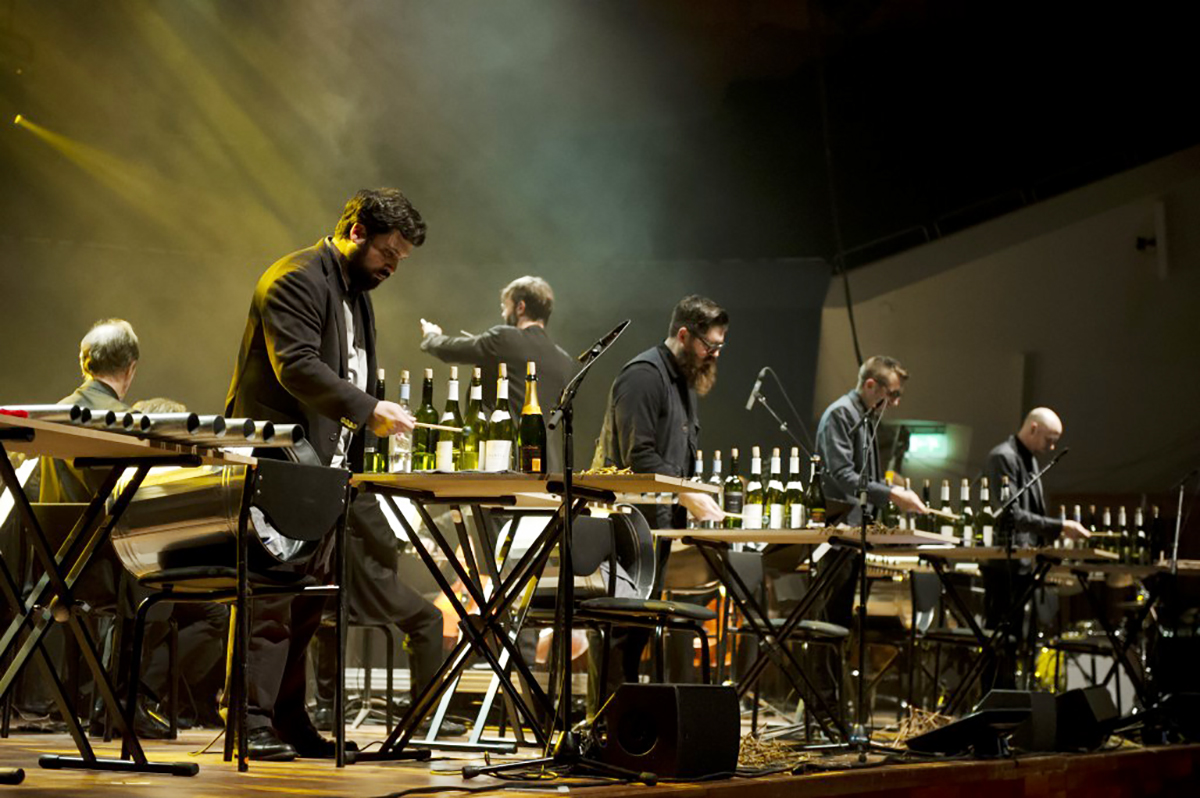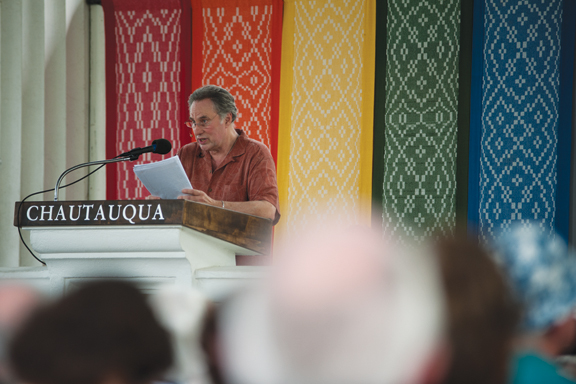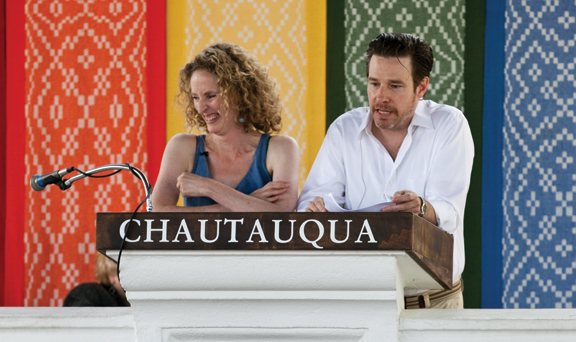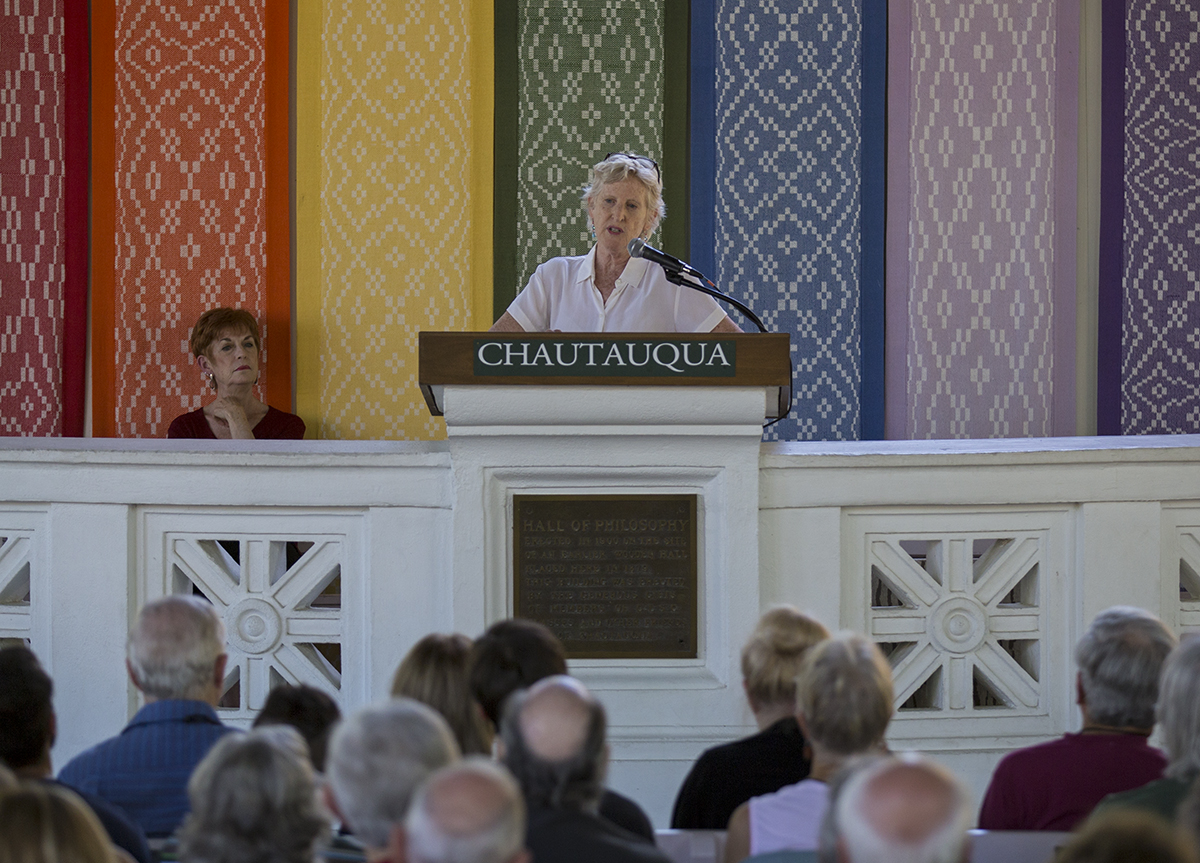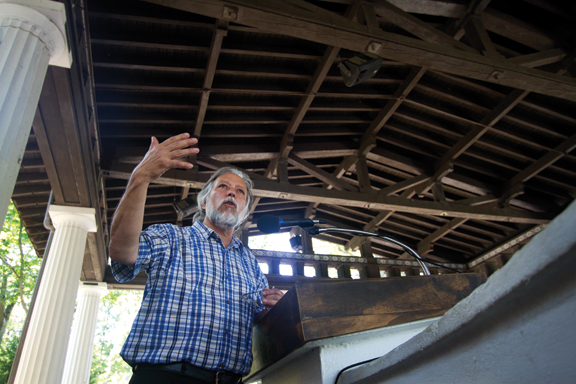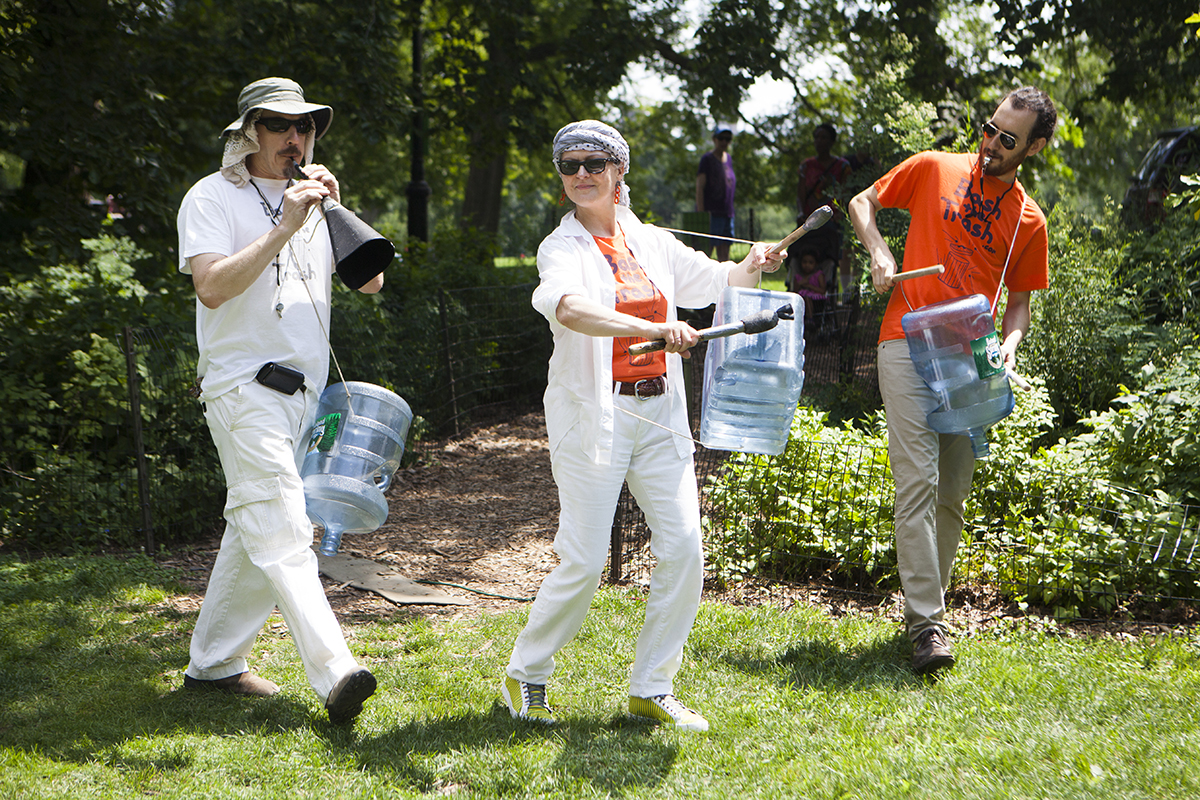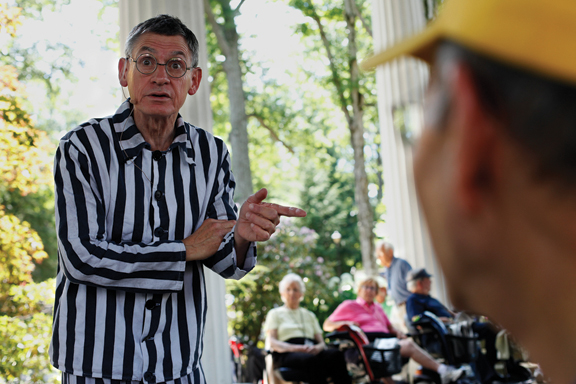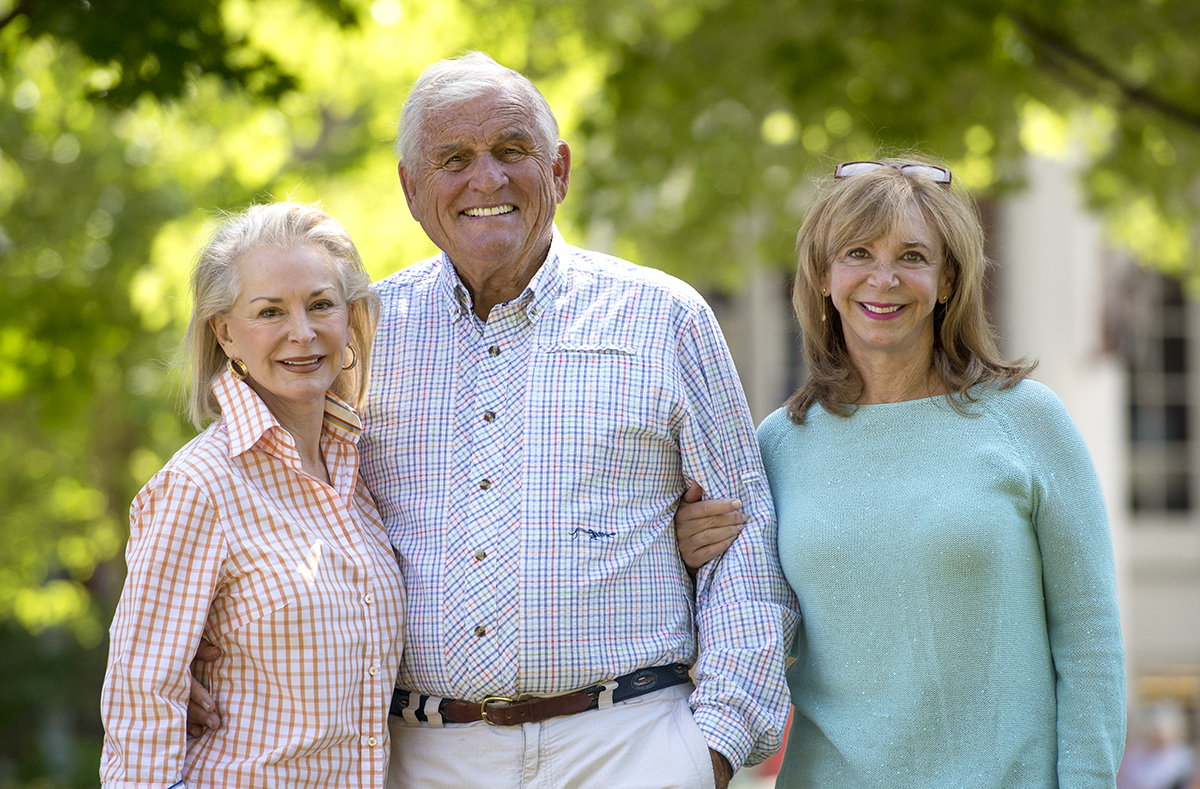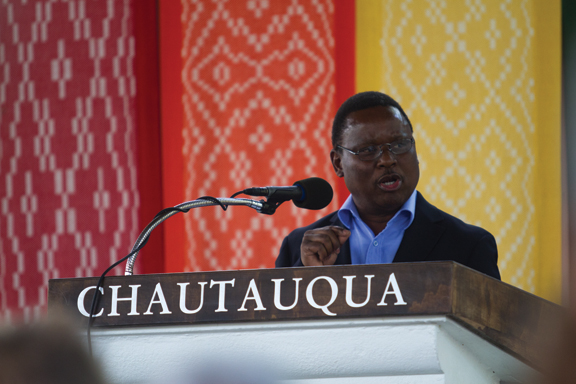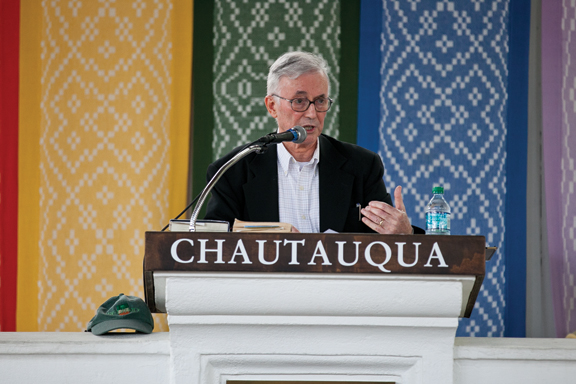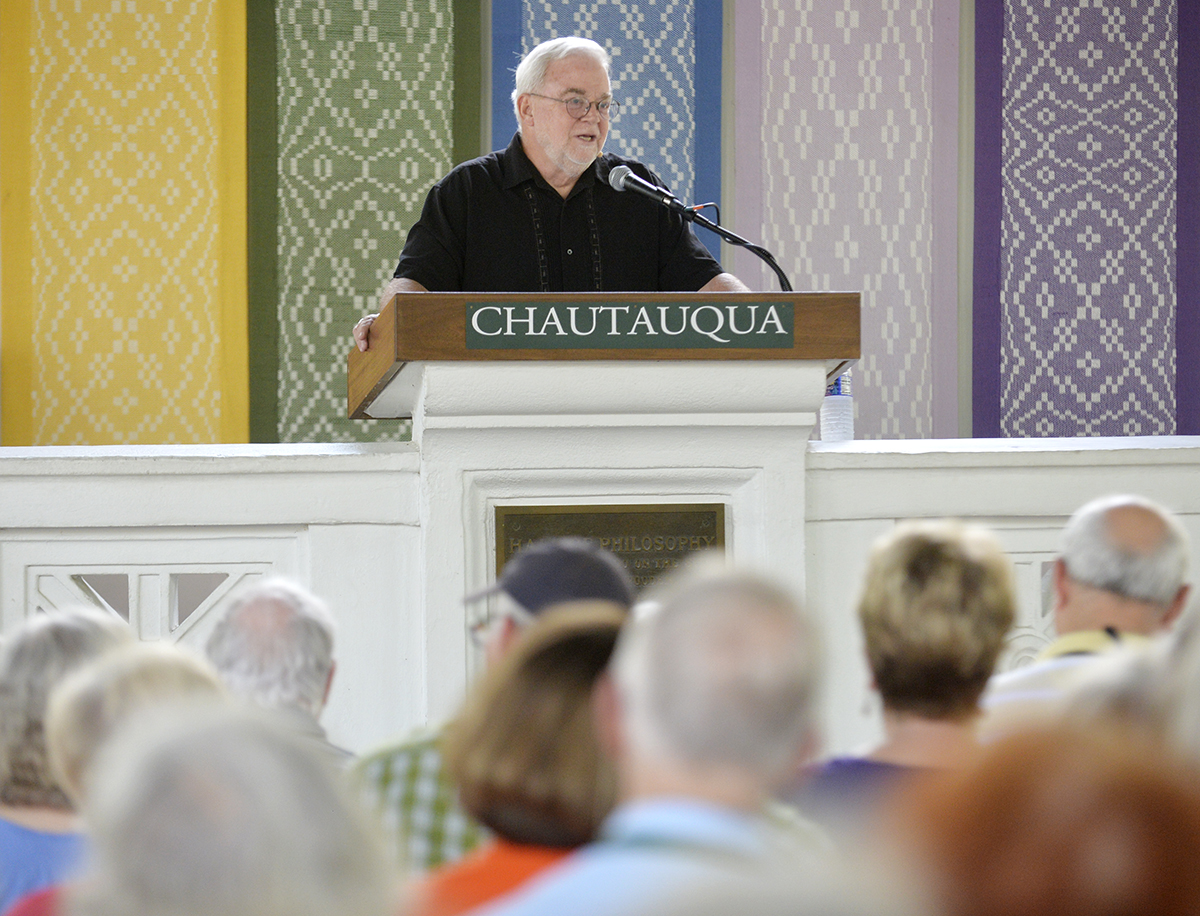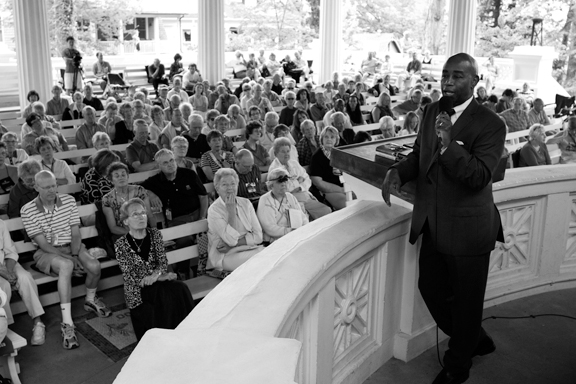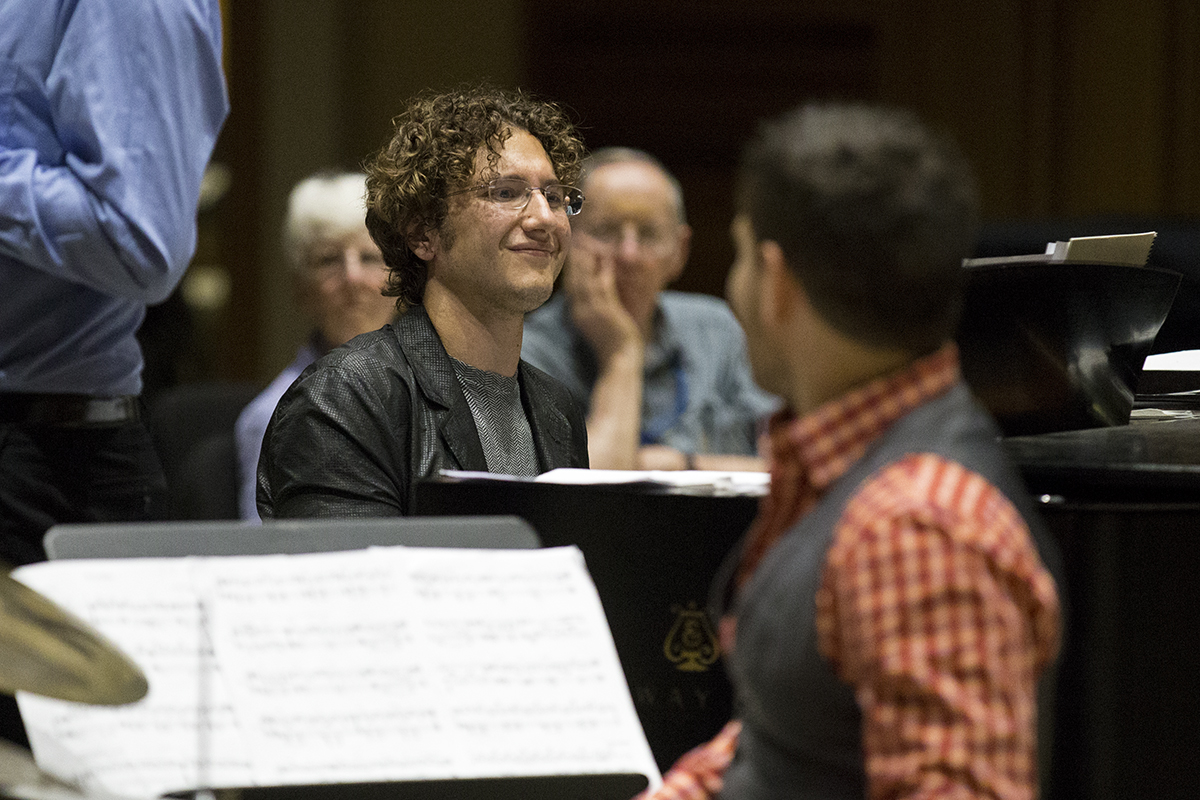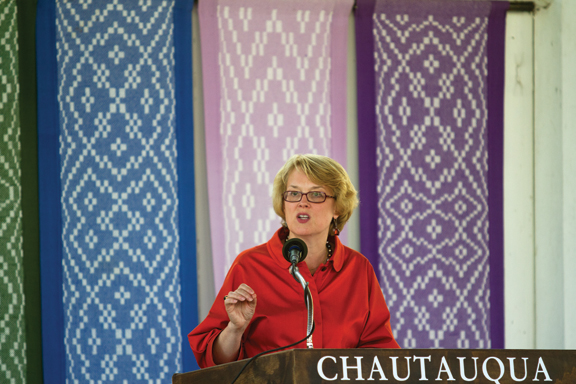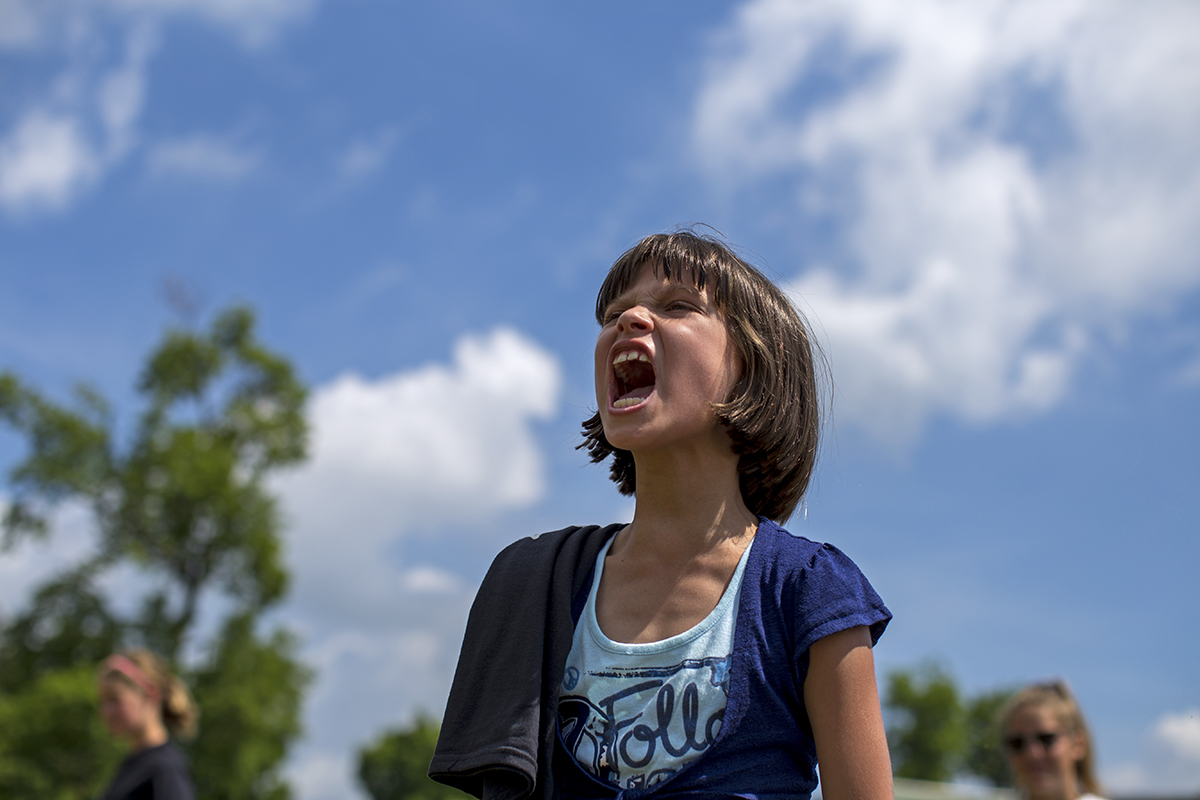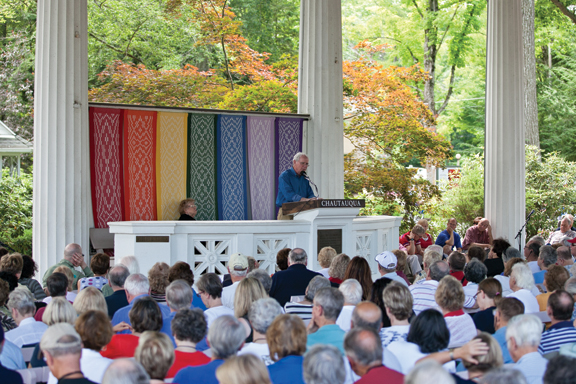In the span of eight trips, John Shelby Spong has lectured over 30 times on the grounds of the Institution alone. However, the next time he makes an appearance in Chautauqua, it will only be as a visitor. Spong will deliver the final four lectures of his career this week, and on Monday, he said he could not think of a better place for his final act before retirement.
“I wanted to wind up my speaking career in the place I love the best,” he said. “On Thursday, when I give that (final) lecture, I want to go out on the top, mainly in Chautauqua.”
Spong, who is a retired bishop of Newark, a liberal Christian theologian and author, gave his first of four speeches on “Producing a Living Faith Today?” on Monday in the Hall of Philosophy. Spong used his latest book, Unbelievable: Why Neither Ancient Creeds Nor the Reformation Can Produce a Living Faith Today, to guide the discussion titled “The Context of our Unbelieving.”
“It is a book with its own history,” he said. “I wanted to make it a culminating book, a book that represented my point of view, my teaching. I wanted to put it all together in one place and make it a book that called people into a new understanding of Christianity.”
The idea for the book originated when his daughter approached him with an unsettling observation: The questions the church continues to debate are no longer relevant in today’s world. In his Monday lecture, Spong applied that question specifically in the realm of scientific advancements he said the Christian faith is choosing to ignore.
“We live in a world on the other side of great scientific achievements,” he said. “Those achievements, we’ve got to take seriously. It is no good to pretend that they are not so, that they did not happen.”
To expand on this idea, Spong touched on a series of scientific leaders whose work further complicated the teachings of the Christian faith.
First came Copernicus, Johannes Kepler and Galileo, whose studies of the universe destroyed forever God’s dwelling place above the sky, Spong said.
Spong used the message exemplified in the book Above Us Only Sky by Don Cupitt, an English philosopher of religion and scholar of Christian theology, to make his point.
“Do we not know that the sky is full of planets and suns and galaxies and deep holes and all kinds of various matter that people don’t quite understand?” Spong said. “Where is God? If God is not anywhere to be observed, God ceases to be anywhere to be seen.”
Next came the scientific revelations of Isaac Newton, whose work caused the structure of Christianity to unravel even more when he demolished the possibility of any external source possessing the power to invade the universe.
“One wonders what God did then,” Spong said. “A legend said, ‘God has become unemployed. He no longer can work miracles.’ ”
Charles Darwin followed Newton, and Spong said Darwin’s discoveries in particular were destined to change the world. Most influential was Darwin’s theory of evolution, which altered the way humans viewed their place in the hierarchy of species. The similarities between apes and humans was a notion not well-received by the people of England, who attempted to distance themselves from the theory as much as possible.
“The two most animal-like functions we have are eating and procreation, or sex,” he said. “The English people refined the first and denied the second. They thought that could make them less animal-like.”
Darwin’s findings also changed the way people thought about the Bible, something Spong referred to as a signal change in mentality.
“Darwin believed that life was continuous, but the Christian church had taught that life was unique,” Spong said. “It is hard to reconcile those two. We have had a battle going on for almost 200 years between those two things.”
With Sigmund Freud came the knowledge of the unconscious and the idea that a person’s belief system derives from their parents, regardless of intention. According to Spong, uncertainty reigned as people further delved into ideas they had never thought of before.
Spong concluded this sequence with his idea inspired by Albert Einstein’s work.
“There is no such thing as objective external and eternal truth,” Spong said. “We are all relative creatures, grappling to understand ourselves in the world that we live in.”
As Spong looked back on the lessons from those seven intellectuals, he said there is one common thread that connects faith and fact.
“There is enough here for us to know that we are way behind in thinking about the Christian faith in the light of the knowledge of our world,” he said. “Impede the conflict that these changes in conflict created. I want to bring the two together, but a great deal will have to be sacrificed for that to take place, things that most of us think are essential to Christian religion.”
Spong had planned to spend his last year in the public eye with his wife, traveling around the world, to further examine how science and religion can come together. That last year was to be June 2016 to 2017.
It started on schedule with his 2016 visit to Chautauqua, a week he refers to as the highlight of his career. He lectured that week on biblical literalism and the difference between his understanding of the Bible and the way it is taught in the church.
“I considered (those teachings) inadequate,” he said. “I looked for something more. I am sure we have to give up something about the way we treat the Bible.”
After Chautauqua, the Spongs arrived at their favorite vacation spot: the mountains of western North Carolina. There they mountain climbed by day and delivered lectures by night.
The third destination, Marquette, Michigan, is where things came to a startling halt for Spong. He had a stroke that left him temporarily unable to walk or use his arms.
At the time of the stroke, he still had two chapters of Unbelievable to write, chapters he considered crucial. With a lasting injury to his right hand, he was unable to write legibly, so his wife took over the role of editor, assisting him in finishing the book in time for its original publishing date.
In Unbelievable, Spong wrote a total of 12 chapters about topics he wants to make sure people think about, chapters he refers to as “theses.”
The 12 topics are as follows: God, Jesus the Christ, original sin, the virgin, birth, miracles, theology, Easter, the Ascension, ethics, prayer, life after death and universalism.
Spong will be further expanding on these chapters in this week’s 2 p.m. interfaith lectures as he strives to answer one last pressing question: Can Christianity for the living world of today “be developed out of these 12 theses, or are we in the position where we are looking at the death of the Christian faith?” he said.

